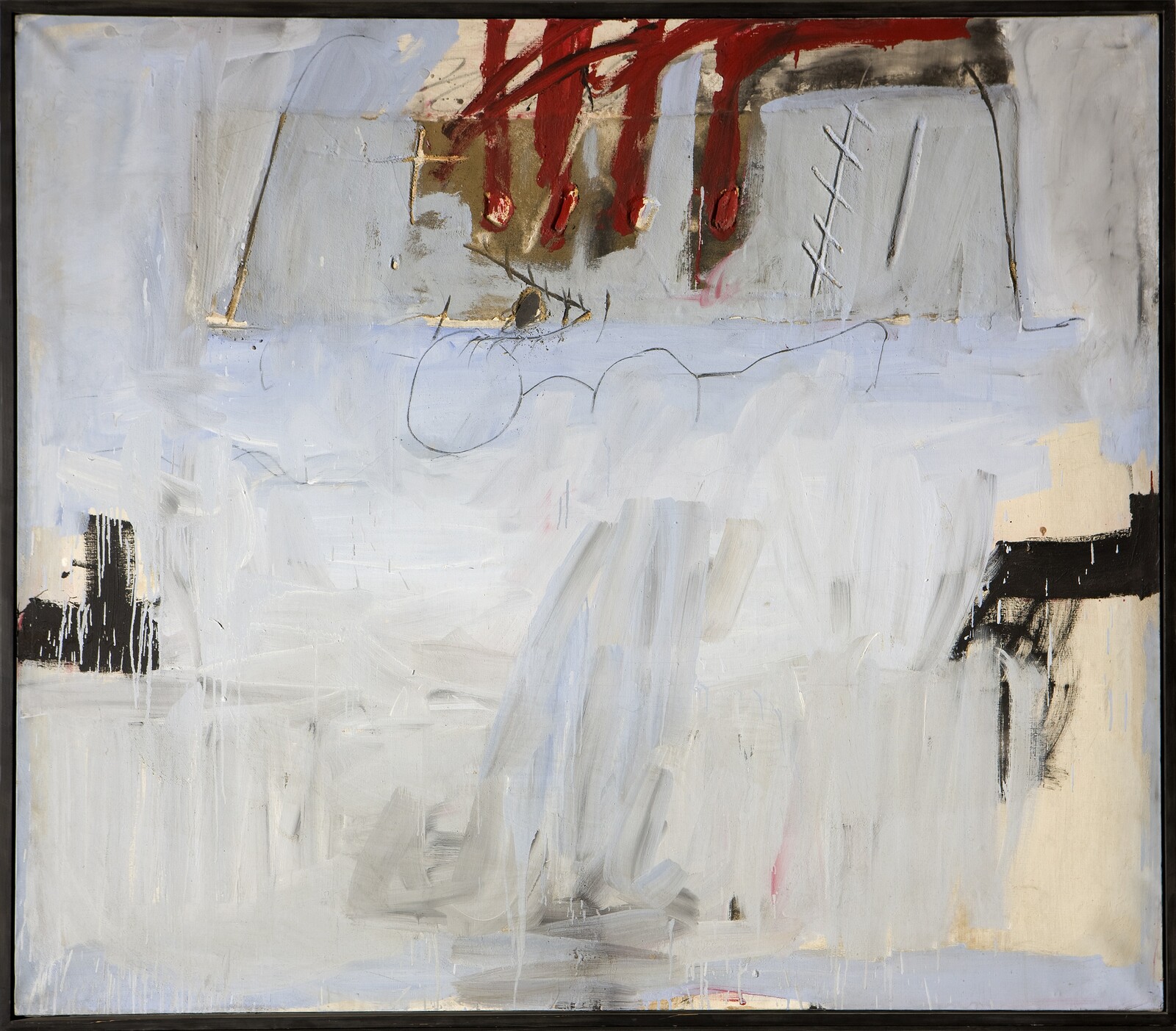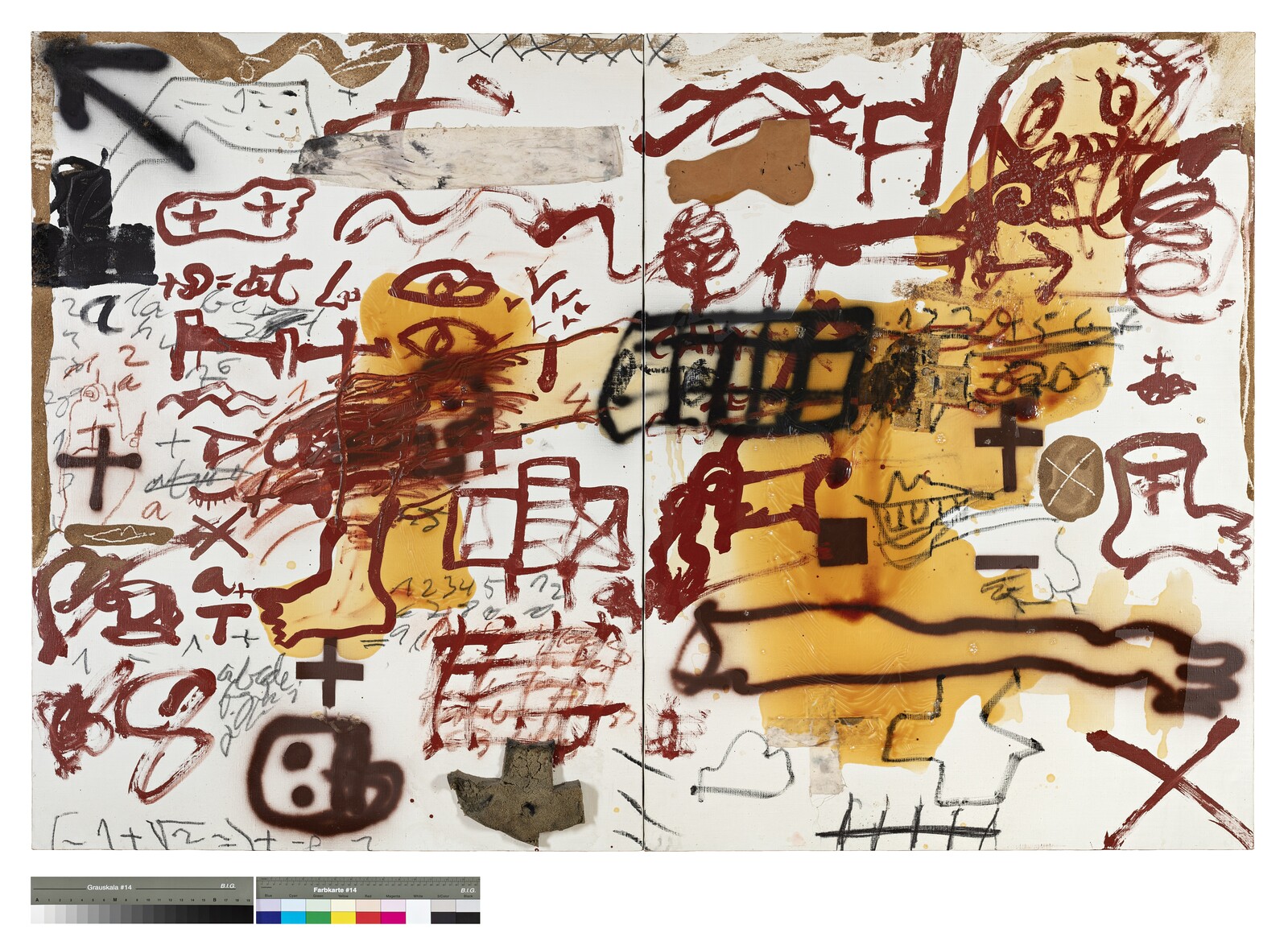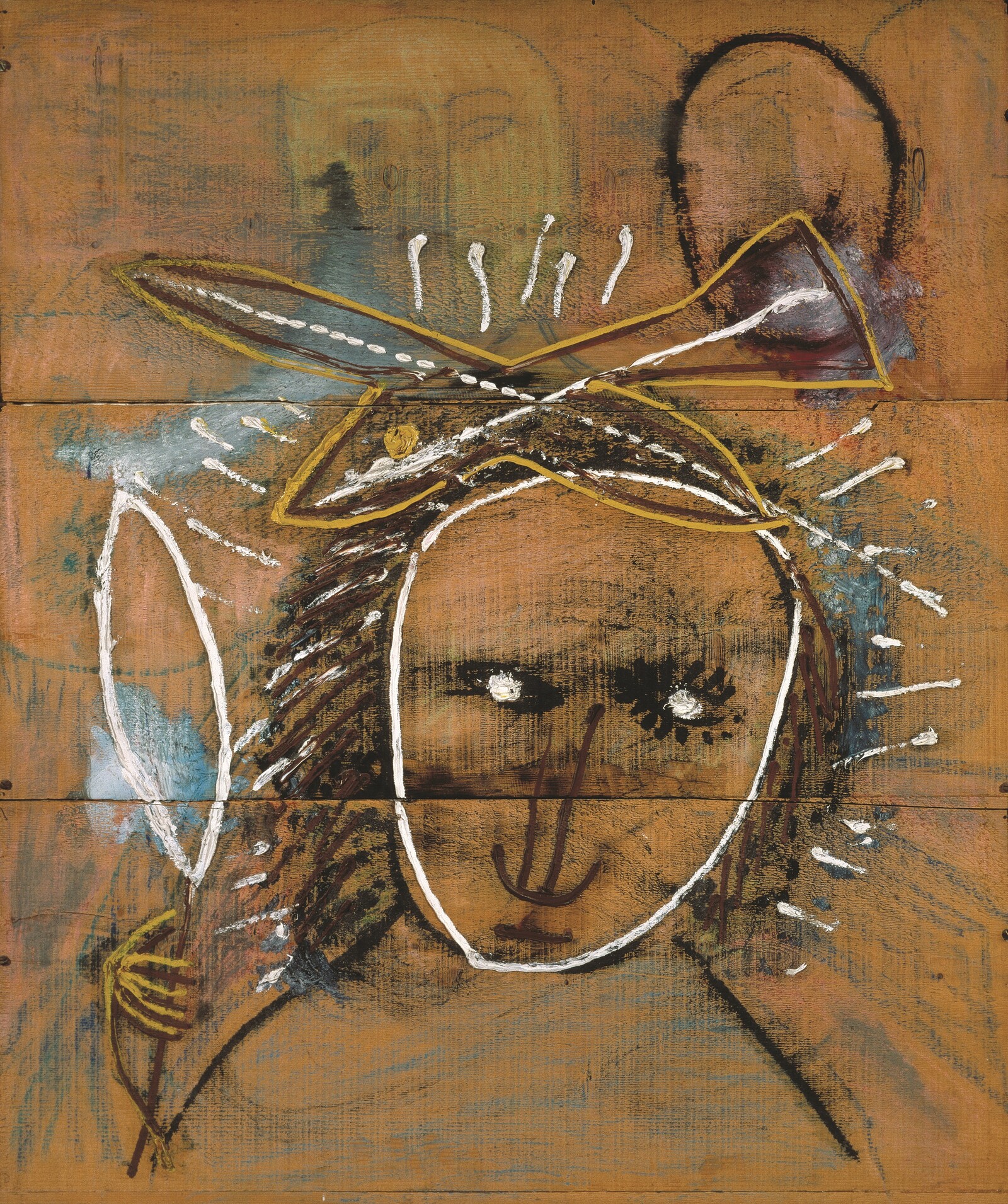The Practice of Art
September 15, 2023–January 7, 2024
Rue Ravensteinstraat 23
1000 Brussels
Belgium
Hours: Tuesday–Sunday 10am–6pm
As part of the Spanish Presidency of the Council of the EU and on the occasion of the centenary of the birth of Antoni Tàpies (1923-2012), Bozar presents the most important Tàpies retrospective in almost 20 years.
The exhibition, organised by the Museo Nacional Centro de Arte Reina Sofía, Madrid, in collaboration with Bozar and the Fundació Antoni Tàpies, offers a comprehensive overview of Tàpies’ work, comprising more than 120 paintings, drawings and sculptures.
Manuel Borja-Villel is the curator of this first Tàpies retrospective in Belgium in almost 40 years. This exhibition, which opens the Tàpies Year (“Any Tàpies”), has its European premiere at Bozar and will then travel to Madrid, at the Reina Sofía Museum, and to Barcelona, at the Fundació Antoni Tàpies.
The exhibition begins with Tàpies’ early drawings and self-portraits and continues with the “matter paintings” of the 1950s and the objects and assemblages of the 1960s and 1970s. This was followed by the varnish paintings of the 1980s, which he had begun a few years earlier during the early days of democracy in Spain. The exhibition also presents works from the 1990s, during which Tàpies continued his formal and material experimentation that had always been at the heart of his practice.
Often associated with “materialism” or “informal art”, Tàpies’ artistic practice was based on gesture and the use of modest and unconventional materials on canvas. He used sand, string, dust, hair or straw, suggesting that beauty can be found in the small, unexpected and everyday.
Tàpies managed to create an infinite number of textures and reliefs on his pictorial supports, which he also called “walls” (in reference to his name. Tàpies means “walls” in Catalan). He also incorporated new materials, such as latex, emulsion and tar, applied in thick layers, which he scratched, slashed and hollowed out. Thus the painting became a “battlefield” where hand-to-hand contact with the material is palpable and makes the work three-dimensional. In these thick pastes, Tàpies inscribed and incised graphic and symbolic signs: triangles, circles, crosses that evoke archaeological, mystical or historical references.
Therefore, his work is not only a study of matter but also explores the perception of reality and human nature.
At the same time, Tàpies’ art is intimately linked to the history and politics of his country, which was affected by the Spanish Civil War, the Second World War and Franco’s regime. “If I paint the way I paint, first of all it’s because I am Catalan. But, like so many others, I am affected by the political drama of Spain as a whole”, wrote Tàpies. “In my painting I want to inscribe all my country’s difficulties, even if I cause displeasure: suffering, painful experiences, prison, a gesture of revolt. Art must live the truth.”
An exhibition catalogue will be on sale at the Bozar Bookshop by Walter König. The exhibition can be visited and experienced in various ways and occasions: during the Opening Week, on week-end tours, during one of the monthly nocturnes or the slow art tour. We have the pleasure of inviting you for the official opening night, enriched with a unique performance of LaBOLA by La Ribot Ensemble.
Tickets: 16 EUR
Organised by
Museo Nacional Centro de Arte Reina Sofia
Collaboration
Bozar
Fundació Antoni Tàpies
Support
AECID—Agencia espanola de cooperacion International para el desarollo
Oficina de Coordinación para la Presidencia española de la UE
Institut Ramon Llull
Belgian Federal Public Service, Foreign Affairs, Foreign trade & Development Cooperation
In the framework of the Spanish Presidency of the Council of the European Union
Any Antoni Tàpies, Barcelona
Press contact: Leen Daems, Press Expo & Coordinator Bozar Press Office, press [at] bozar.be
Press images








